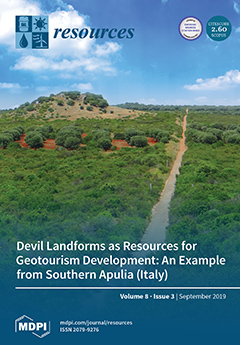Soil organic carbon (SOC) generates several ecosystem services (ES), including a regulating service by sequestering carbon (C) as SOC. This ES can be valued based on the avoided social cost of carbon (SC-CO
2) from the long-term damage resulting from emissions of carbon dioxide (CO
2). The objective of this study was to assess the value of SOC stocks, based on the avoided SC-CO
2 ($42 per metric ton of CO
2 in 2007 U.S. dollars), in the contiguous United States (U.S.) by soil order, soil depth (0–20, 20–100, 100–200 cm), land resource region (LRR), state, and region using information from the State Soil Geographic (STATSGO) database. The total calculated monetary value for SOC storage in the contiguous U.S. was between $4.64T (i.e., $4.64 trillion U.S. dollars, where T = trillion = 10
12) and $23.1T, with a midpoint value of $12.7T. Soil orders with the highest midpoint SOC storage values were 1): Mollisols ($4.21T), 2) Histosols ($2.31T), and 3) Alfisols ($1.48T). The midpoint values of SOC normalized by area within soil order boundaries were ranked: 1) Histosols ($21.58 m
−2), 2) Vertisols ($2.26 m
−2), and 3) Mollisols ($2.08 m
−2). The soil depth interval with the highest midpoint values of SOC storage and content was 20–100 cm ($6.18T and $0.84 m
−2, respectively), while the depth interval 100–200 cm had the lowest midpoint values of SOC storage ($2.88T) and content ($0.39 m
−2). The depth trends exemplify the prominence of SOC in the upper portions of soil. The LRRs with the highest midpoint SOC storage values were: 1) M – Central Feed Grains and Livestock Region ($1.8T), 2) T – Atlantic and Gulf Coast Lowland Forest and Crop Region ($1.26T), and 3) K – Northern Lake States Forest and Forage Region ($1.16T). The midpoint values of SOC normalized by area within LRR boundaries were ranked: 1) U – Florida Subtropical Fruit, Truck Crop, and Range Region ($6.10 m
−2), 2) T – Atlantic and Gulf Coast Lowland Forest and Crop Region ($5.44 m
−2), and 3) K – Northern Lake States Forest and Forage Region ($3.88 m
−2). States with the highest midpoint values of SOC storage were: 1) Texas ($1.08T), 2) Minnesota ($834B) (i.e., $834 billion U.S. dollars, where B = billion = 10
9), and 3) Florida ($742B). Midpoint values of SOC normalized by area within state boundaries were ranked: 1) Florida ($5.44 m
−2), 2) Delaware ($4.10 m
−2), and 3) Minnesota ($3.99 m
−2). Regions with the highest midpoint values of SOC storage were: 1) Midwest ($3.17T), 2) Southeast ($2.44T), and 3) Northern Plains ($2.35T). Midpoint values of SOC normalized by area within region boundaries were ranked: 1) Midwest ($2.73 m
−2), 2) Southeast ($2.31 m
−2), and 3) East ($1.82 m
−2). The reported values and trends demonstrate the need for policies with regards to SOC management, which requires incentives within administrative boundaries but informed by the geographic distribution of SOC.
Full article





